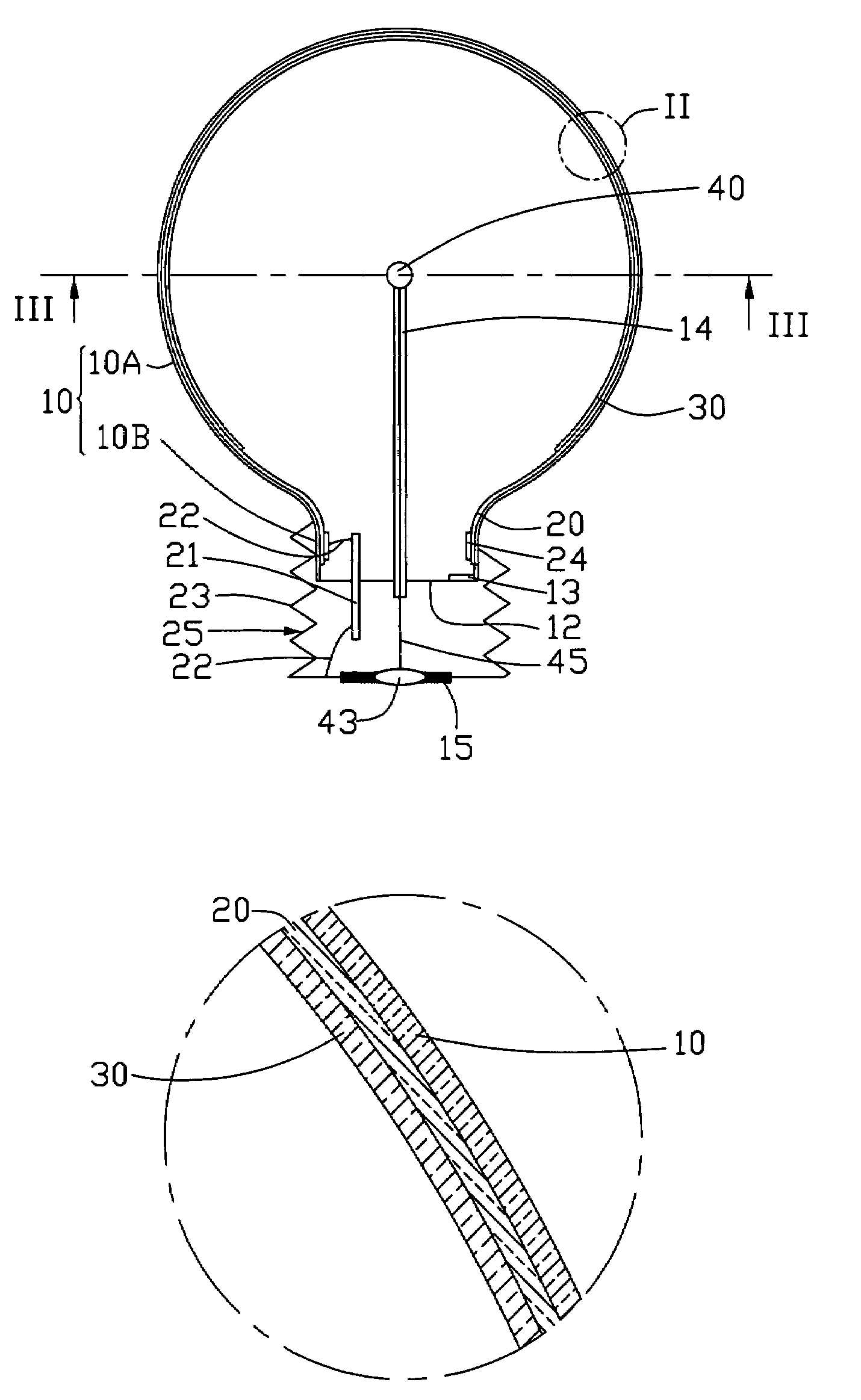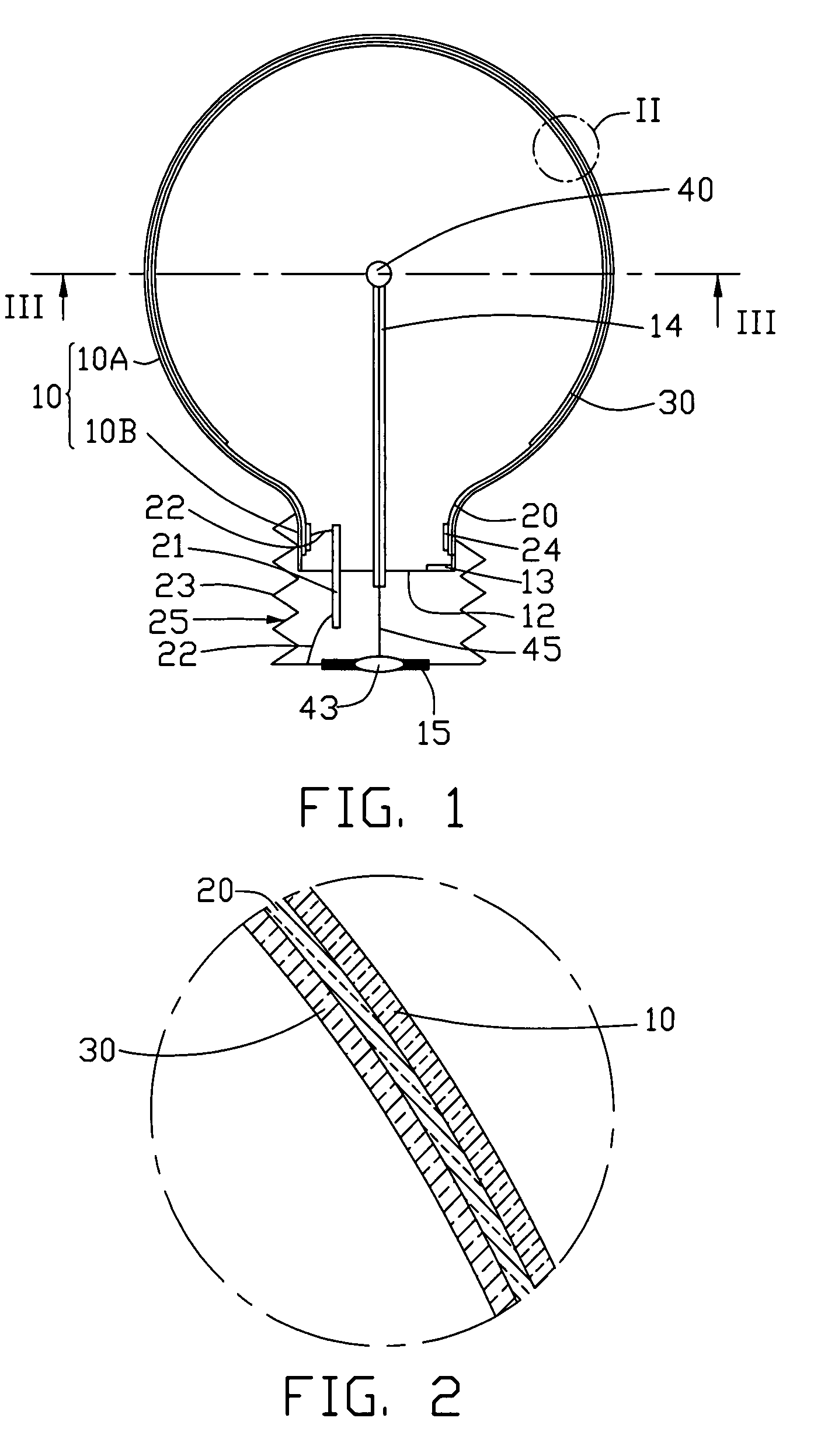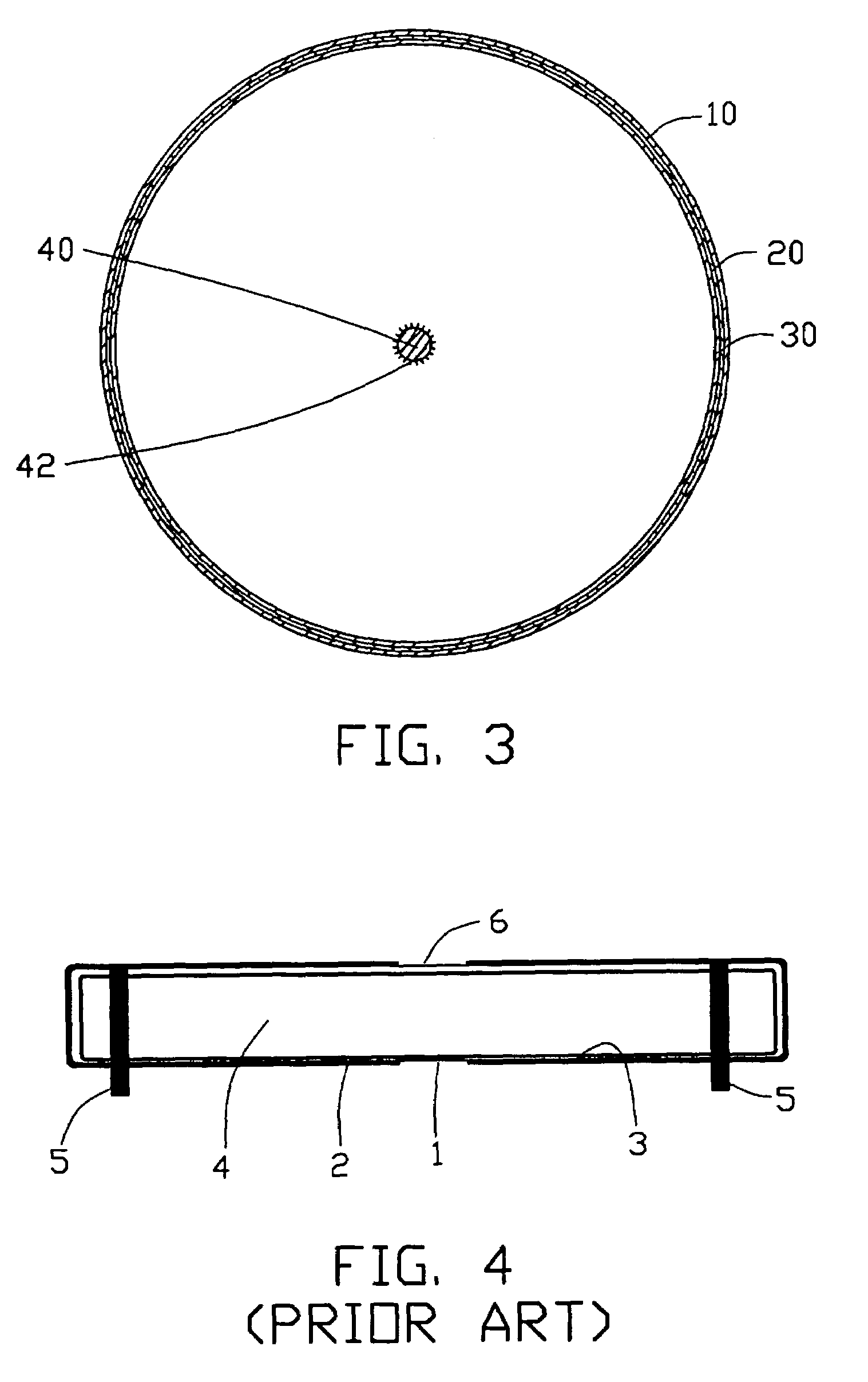Field emission lamp
a field emission lamp and field technology, applied in the field of lamps, can solve the problems of incandescent lamps having a low inability to use luminescence, and most electric energy consumed by incandescent lamps is converted into heat energy, etc., and achieves low energy consumption, high electrical energy utilization ratio, and reduced cost
- Summary
- Abstract
- Description
- Claims
- Application Information
AI Technical Summary
Benefits of technology
Problems solved by technology
Method used
Image
Examples
Embodiment Construction
[0018]Reference will now be made to the drawings to describe preferred embodiments of the present invention in detail.
[0019]Referring to FIGS. 1 and 2, a field emission lamp includes: a lamp body of the lamp, for example, a transparent glass bulb 10 having a main portion 10A and a neck portion 10B; a lamp head 25 mated with the neck portion 10B; an anode layer 20 formed on an inner surface (not labeled) of the bulb 10; a fluorescence layer 30 formed on the anode layer 20; a cathode electrode 43 and an anode electrode 23 located at the lamp head; an anode down-lead ring 24 located at the neck portion 10B, the anode down-lead ring 24 engaging with the anode layer 20 and electrically connecting with the anode electrode 23 via an anode down-lead pole 21 and a pair of anode down-leads 22; and an electron emitting cathode positioned in the bulb 10 and engaging with the cathode electrode 43.
[0020]The anode layer 20 is a transparent conductive film, such as an Indium Tin Oxide (ITO) film. T...
PUM
 Login to View More
Login to View More Abstract
Description
Claims
Application Information
 Login to View More
Login to View More - R&D
- Intellectual Property
- Life Sciences
- Materials
- Tech Scout
- Unparalleled Data Quality
- Higher Quality Content
- 60% Fewer Hallucinations
Browse by: Latest US Patents, China's latest patents, Technical Efficacy Thesaurus, Application Domain, Technology Topic, Popular Technical Reports.
© 2025 PatSnap. All rights reserved.Legal|Privacy policy|Modern Slavery Act Transparency Statement|Sitemap|About US| Contact US: help@patsnap.com



